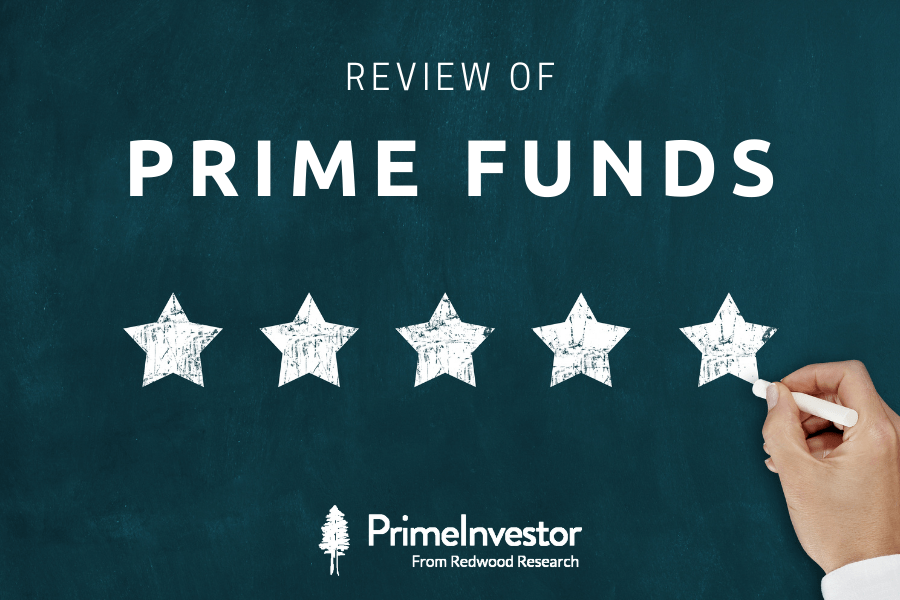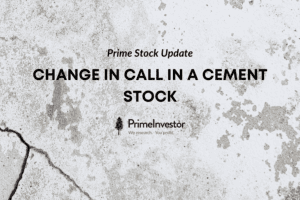Prime Funds is our list of recommended mutual funds across equity, debt, and hybrid categories. We use Prime Ratings, our fund ratings, as a first filter and then use qualitative analysis to design our fund recommendations. Prime Funds is an enduring list of funds that you can use, and you will find a fund that meets any goal you’re looking to meet. Before moving to this quarter’s changes in our Prime Funds review, please note the following points about Prime Funds:
- Different categories: Prime Funds is separated into buckets, based on risk level in equity & hybrid funds, and timeframe in debt funds. Each of these draws from different SEBI-defined categories. We do not go only by Prime Ratings, but look at other factors as well. Our reasoning for this is explained here.
- Different styles: In Prime Funds, we’ve aimed at providing funds that follow different strategies in order for you to mix styles and diversify your portfolio with ease. The ‘Why this fund’ for each Prime Fund will brief its strategy, why we picked it, and how to use it in your portfolio.
- Direct plans: We have specifically given the direct plans in Prime Funds. We have observed that even in top-quality funds, the regular plan’s expense ratio can be significantly higher than the direct plan. In such cases, the direct would be the better option to go for. Check our MF Review Tool (and not just our ratings page) to know if you can go for the regular plan as well. Our reasoning is explained here.
- Review: Our aim in reviewing the Prime Funds list every quarter is to ensure that we don’t miss any good opportunities that are coming up and we are not holding on to funds that are slipping. When we remove funds from the Prime Funds list, we tell you exactly what to do if you have invested in these funds. Funds we remove do not immediately call for a sell – it is just that they have slipped in performance marginally or there are better alternatives now. Unless our review tool says such funds are a ‘sell’, you can hold them (refer to our article on when to sell funds.)
- Using Prime Funds: You do not need to hold every Prime Fund nor add any new fund we introduce to the list. Unless it fits your overall portfolio/strategy, or there is something lacking, there is little need for you to go on adding funds. Our idea of covering them in details through some of our weekly calls is to let you know the strategy, style and suitability in different portfolios. It is not a specific call to buy right away, unless we mention it is.

With that said, here are the changes we have made in this review cycle.
Equity funds
Stock markets have rallied since our last review, despite day-to-day blips. While the December 2020 quarter results showed strong growth, much depends now on how the coming quarters pan out and the impact of mini-lockdowns and continuing effect of the pandemic. Therefore, further volatility cannot be ruled out, and we continue to take a relatively cautious stance in adding funds.
Given that markets were in a tailspin this time last year, recent fund returns look phenomenal. It’s best not be too enamoured with these numbers as the base effect will wear off. This apart, several funds that were severe laggards in the years before this – especially those that followed a value-based strategy – have used this rally to regain lost returns. These funds, as a result, have climbed to the top of the charts pushing out the former toppers.
However, we would still like to see some sustained improvement before changing our stance on them. Our changes to equity funds this quarter are as follows.
Equity – Aggressive
In this category, we have added UTI Flexi Cap (UTI Equity, before it shifted over to the flexi-cap category). This fund adopts a bottom-up, quality-based approach. It can deviate from the broad-market Nifty 500 index and can take heavy sector exposures.
This fund was previously an underperformer before it saw both a strategy and a manager change. Its consistency has picked up steadily and the fund now beats the Nifty 500 88% of the time over the past 4-year period, similar to funds such as Axis Flexi Cap and Kotak Equity Contra. Unlike many other growth-based funds, this fund has not lost much ground against the index in the recent value-fuelled rally. Its risk-adjusted returns hold well above the category.
The fund invests across market capitalisations; while large-caps are the portfolio majority, mid-and-small caps can go up to a third of the portfolio. It is also more volatile than other multi-cap style funds. These factors, along with its strategy, are the reason we’ve included this in the aggressive category in Prime Funds.
We have removed Invesco India Growth Opportunities in this review. We had made a mention of its underperformance in our earlier review. These reasons continue to hold – which is that certain top stock picks, and a lower mid-cap allocation, dragged returns. For instance, top portfolio weights remain financials, which have seen uneven market performance. The fund has made portfolio changes to pick up market opportunities. However, the margin of underperformance against the Nifty LargeMid 250 is yet to improve.
If you have SIPs in the fund, stop and restart in other funds. Choose from other funds in the Aggressive Prime Funds set, or use more aggressive index funds such as the Nifty Next 50 or the Nifty 500. Hold investments made so far in order to capture a turnaround in the fund’s performance; the fund’s longer-term record and strategy both remain above average.
For those investing in this fund as part of your Prime Portfolio, we’ll separately let you know what action to take. You will receive an alert to check your dashboard for the same.
Given that markets were in a tailspin this time last year, recent fund returns look phenomenal. It’s best not be too enamoured with these numbers as the base effect will wear off.
Strategy/thematic
Here, we have added ICICI Pru Commodities. With commodity prices on the rise globally, stocks in this space have seen an improvement in realisations. This apart, a longer commodity cycle is likely to play out in steel, driven by China’s emission control norms. This can prove a positive for Indian steel companies. Other commodity plays across metals and oil and gas too are seeing heightened prospects.
ICICI Pru Commodities invests across the spectrum – oil & gas, chemicals, metals, cement, and more. It takes concentrated exposures to sectors where there is promise and can quickly switch over from one to the other. In commodities, its important to spot and latch on to an uptrend quickly. In this ability, our view is that ICICI Pru Commodities is nimbler than SBI Magnum Comma, the other commodity play. As always, thematic investing carries higher risks. The theme does not also lend itself to long SIPs, so it’s best to invest in a few lump-sums in the next 6 months at most. Don’t go over 5-10% in allocations and remember to book profit from time to time in such cyclical themes.
Hybrid funds
We have not made any changes to our recommendations in hybrid funds. We’d however like to note the performance of ICICI Prudential Balanced Advantage, which features in the Hybrid Equity – Moderate Risk category in Prime Funds.
This fund had lagged peers, as we pointed out before, because it took on higher risks in unhedged equity than peers and suffered in containing volatility and downsides. In the past few months, though, the fund has improved performance and has begun beating category average. Its volatility has lowered, and given the market uncertainty, it has increased the hedged component of the portfolio more than peers have.
Debt funds
The debt market continues to field uncertainty over where rates are headed; while indications are that rates are likely to move higher, the Reserve Bank appears to be working to keep rates in check. This tug-of-war certainly does not lend itself to risk-taking in duration. Therefore, we prefer to remain cautious in adding duration-based funds at this time.
Debt – 3 months to 1.5 years
In this category, we have added a money market fund – Aditya Birla Sun Life Money Manager fund. This is a fund with high credit quality and low volatility. It invests in commercial papers, certificate of deposits and other money market instruments. The fund’s average maturity is less than 1 year.
The fund is able to beat peers reasonably steadily; its average 1-year returns over the past 4 years at 7.8% is above the 7.3% that other very short-maturity funds delivered – and do note that peers include those that take credit risk. Apart from high portfolio quality and low volatility, we also chose this fund because any uptick in market interest rates will reflect quickly in CPs and CDs.
Debt – 1.5 to 3 years
We added Nippon India Floating Rate fund here. Floating rate funds use floating-rate bonds and interest derivatives in their portfolios, making them well-placed to reflect any changes in the interest rate cycle.
Nippon India Floating Rate sticks to high-quality papers. It does not take concentrated exposure to papers outside of PSUs. The fund beats other very short-maturity funds steadily, and has better portfolio yields. However, it can be more volatile on a weekly or even monthly basis as it holds gilt instruments; this is par for the course and you should be willing to let such volatility pass.
For those who do not wish to take any credit risk, Nippon Floating Rate is an alternative to our other recommended floating rate fund – HDFC Floating Rate – which takes some amount of credit calls. Both funds, however, have similar portfolio maturities of around 2 years. You will thus need a minimum 2-year period if you wish to invest in the fund.
Debt – Above 5 years
We’ve fielded a lot of questions from you on our recommendation in SBI Magnum Constant Maturity as its performance saw dips. The fund continues to be part of our recommended list. In debt, we have always said that your timeframe needs to be the key consideration, which the reason for the manner in which we bucket Prime Funds. We have answered questions you may have on SBI Constant Maturity and other debt-fund related questions here.




25 thoughts on “Quarterly review – changes in Prime Funds, our mutual fund recommendations”
It will little more helpful if this quarter review happens by March. So that investors can make necessary changes starting from April in next FY along with taking into consideration whole portfolio rebalance and tax planning.
Hi, thanks for the article, very useful one to keep track of changes.
One suggestion for your consideration: in every MF review page, will it be possible to add history of recommendation/Star ratings changes (with rationale on what drove the upgrade/downgrade would be great). The reason is, I think I saw L&T Midcap fund have at least a 4* ratings and possibly a buy rating on Primeinvestor but as I review my MF holdings through the MF review tool, currently seeing it has a 3.5 * rating with a hold recommendation. May be I remember wrong but no way for me to say for sure and the recommendation/star ratings change history would be very useful from that perspective.
Thank you for the suggestion, it is something we intend to work on – just not in the near future 🙂 While it would be hard for us to explain the reasoning for every rating change for every fund, the reasoning for the call in the review tool will always be provided. The reasoning for changes in Prime Funds will be available under the Research Reports tab in the Articles drop down (here)…we’ll see if there’s any way we can incorporate it into the Prime Funds page. – thanks, Bhavana
Thank you for the response, understood that providing rationale for each recommendation change is not a priority for you in the near term but will it be possible to include a history of ratings changes I the fund home page, just so we know that a ratings change has happened in a fund outside of the prime fund list.. what I mean is some stats like below in a fund’s home page.
1/18/2020: moving to hold from buy
3/31/20: reducing star rating from 4 to 3.5
7/21/2020: moving to sell from hold
9/30/20: moving to 2 star from 3.5 star
and so on…
Even this kind of ratings change history would add immense value to me vs trying to remember what the recommendation/star rating was 3 months back vs what it is now. At present Primeinvestor highlights these changes for the limited number funds in the Prime Funds list through the quarterly review, but unfortunately I own funds outside the list and hate to exit those unless I need to. I am hoping that the ratings change history is somewhere in a database and linking it to the page should not be a huge task. 🙂
Thank You,
Raja
Hi Bhavana, on a separate note, I am a shocked to hear that providing rationale for recommendation change is not a priority. I know that is your prerogative to prioritize which ever you want to, but for a research platform to just change ratings/recommendation of funds at will and deciding not to provide any rationale is some what like an sell-side equity research analyst just changing his/her recommendation and target price randomly with no rationale – I wouldn’t trust that one bit(hoping that’s not just me). My understanding was that a rationale for a recommendation change is a core part any research and research is “the product” that Primeinvestor is selling.
Sorry for belaboring the point and thanks anyways,
Raja
Responding to both comments here..
There are 3 aspects to our MFs:
1. Our recommended fund list, which is Prime Funds – this is the concise list of funds with different strategies, across different categories. We give the rationale for the recommendations, what the fund does, how to use it, and explain the updates on changes, including what to do with your existing investments in the fund.
2. Review tool, which is our view on funds, based on their performance. The reasoning for the call is always provided.
3. MF ratings, which is the star rating of the fund. Please note that fund ratings are not fund recommendations. We explicitly say so in the Prime Ratings page.
Now, as I understood your first comment, it was to provide the ratings history and call history for each fund. That is an absolutely valid request. We had already earlier planned it to be an update we should roll out. As I mentioned in my previous response, we don’t yet have a timeline for this.
What will be hard to do is to provide reasoning for every change in a fund’s rating. Please note that we rate over 400 funds. Our rating is not our fund recommendation. Reasoning for change in our recommended fund list, recommended portfolios, ETFs and deposits is something that we already do. Hope this clarifies.
Thanks, Bhavana
Thanks for support. I like the addition of commodities fund. But please explain the listed commodities fund actual commodities market which is versatile viz. agri based, oil etc.
Also please discount premium rates for original launch members
Sorry, your question isn’t very clear. The fund does not invest in a single commodity. It has exposure to different commodities and it can change this exposure based on cycles. So allocations in the portfolio currently may be different a few months hence. – Thanks, Bhavana
As a DIY investor, I use Prime Investors top rated funds listed in Prime Funds for each category of investments in equity and debt. I don’t use any of the portfolios listed.
You have mentioned that Invesco India Growth Opportunities is removed from review but it’s still rated 4.5 with a HOLD recommendation in Prime Funds. But, Canara Robeco Emerging Equities has moved from 4 to 3.5 with a BUY recommendation. I have an SIP in Invesco and investment positions in Canara. Please suggest what should be my next steps.
Our calls in the review tool are different from the ratings (please read this article to know why ratings are not to be taken as buy/sell calls). We balance long and short term factors in ratings so that we don’t get too influenced by either factor; in the review, we look at other aspects in addition to rating. Invesco is a hold because we’re seeing performance lagging over the past couple of quarter; since its past record is very strong, and the underperformance is not long enough to affect that, its ratings are still higher. What you should do with Invesco Growth is explained in the article. You can continue with Canara Emerging Equity.
Thanks,
Bhavana
Very nicely written article! Can you throw us some light on International exposure funds from Long term perspective? Can we have a few recommendations if you feel some fund s qualify?
Thank you sir. They are available under thematic in our Prime Funds https://staging.primeinvestor.in/prime-funds/ thanks, Vidya
ICICI Pru Commodities is an unusual but interesting option to take some exposure to commodities for a retail investor. Should we expect a timely exit call for this one as and when your research would indicate that the cycle has played out?
Yes..but our getting it right is also a risk – as far as thematic, esp. commodity in concerned! So factor in that as well 🙂 Vidya
Thanks Vidya for the updates. Nice article.
Do we need to incorporate these revisions in the “Less than 1 year” (ABSL Money M
anager Fund) and “Greater than 7 years ” (Invesco India Growth Opportunities Fund) Time Based Ready to use portfolios ? If so, how should we go about doing this .
Thanks
Rohan
As mentioned in the article, we’ll alert you separately on what you need to do with Invesco Growth that is part of Prime Portfolios. As far as ABSL Money Manager goes, if you wish to make additional investments and the fund suits your need, you can go ahead. Don’t add to your funds simply because we’ve introduced it in Prime Funds. – Thanks, Bhavana
Good one as usual. Just a little query ; whether money market funds can be the only debt option in a portfolio instead of various other options?
Do you mean use only money market funds in your debt exposure? You can, if you wish to be fuss-free in debt. Just that you may miss opportunities in the other debt funds; money market funds invest only in CPs/CDs and don’t go into corporate bonds/gilts etc, or funds that have different maturity profiles, which can offer different return potential. If you’re fine with this, you can stick to simple short-maturity funds. Do note that you will still need to review the money market funds to ensure that they remain quality ones. – Thanks, Bhavana
Hello,
Thanks for the timely post, it is interesting to note that you pointed the Commodities fund as a recommendation for some lump sum investment.
I would like to know if there shall be a report to sell the fund when the right time arrives or when the commodities cycle peak?
Thanks Primeinvestor Research Team !! Indeed a good job!
With regards to tactical sectoral call, I was expecting FMCG or Consumption fund like Mirae Asset Great Consumer Fund to be a part of Prime Fund. Failed to understand why BNP Paribas which has Financial exposure which any XYZ fund has, is having more score over Mirae. Also, Mirae is cost effective over BNP Paribas.
Should UTI Momentum Fund be not a replacement of Nifty Next 50 for passive investors on risk reward parameters?
Consumer funds take different sector exposures; they don’t stick only to FMCG or consumer durables etc. There’s a good amount of sector rotation that happens in the funds. Mirae Consumer had a good amount of exposure to financials in earlier months, for example. We picked BNP Paribas because it had strong sector diversity. UTI Momentum does not have enough of a track record (both the index itself and the fund) for us to be confident about including it. Please read our review on it here. – Thanks, Bhavana
Comments are closed.